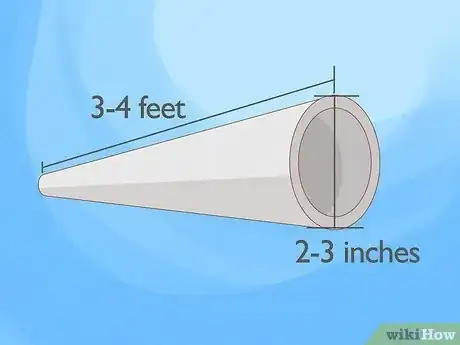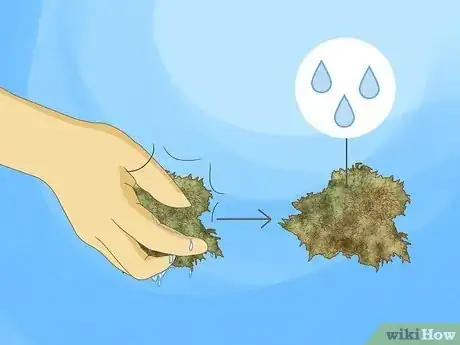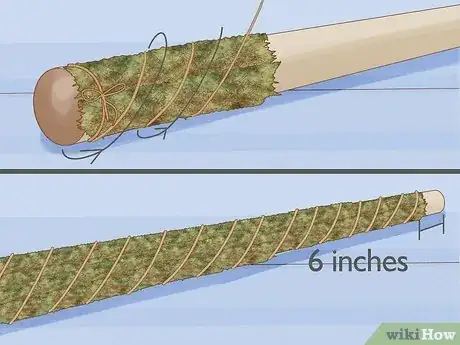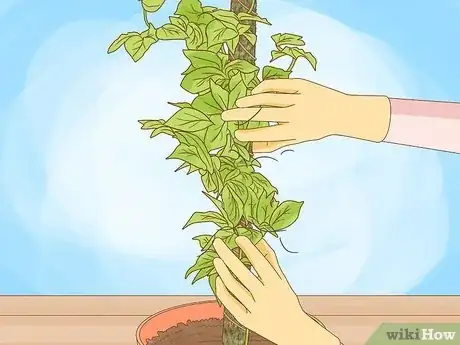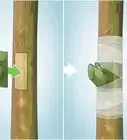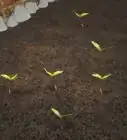This article was co-authored by wikiHow Staff. Our trained team of editors and researchers validate articles for accuracy and comprehensiveness. wikiHow's Content Management Team carefully monitors the work from our editorial staff to ensure that each article is backed by trusted research and meets our high quality standards.
Learn more...
Vining plants make a beautiful addition to any home. As they grow bigger, they often need extra support, and a moss pole can be the perfect solution. A moss pole gives vining plants something to grab onto, allowing them to grow taller and healthier over time. Unlike bare rods, moss poles blend into your garden and look natural. They’re also super easy to make. Here’s our step-by-step guide to making a moss pole for your houseplant or home garden.
Steps
Use a wooden dowel to stake small plants.
-
A wooden dowel is perfect for light, small houseplants. Choose a dowel roughly 1 inch thick and 2-3 feet long. Make sure your dowel is sturdy since it’ll need to support your plant over time.[1] X Research source
- Thicker dowels are sturdier but heavy. If you want something for larger plants, see the next step.
Choose PVC pipe to stake large or heavy plants.
-
PVC pipes are lightweight but strong enough to support heavy plants. Opt for a piece of pipe about 2-3 inches thick and 3-4 feet long. Use PVC if you expect your plant to grow large over time.[2] X Research source
Put on rubber gloves.
-
Gloves protect your hands from fungal infections. Wear rubber gloves for the next steps, and whenever you’re gardening.[3] X Research source
- Use rubber gardening gloves if you have them. If not, use kitchen gloves.
Soak some Sphagnum moss in a tub of water for 15 minutes.
-
Squeeze the soaked moss to drain excess liquid and set it aside. Your moss should be moist but not dripping wet. The moist moss will supply water to your plant’s vines.[4] X Research source
- Moss expands as it absorbs water, so make sure your tub has extra room.
Cut a piece of string and tie it to the stake.
-
Use 2-3 feet of string for a dowel, or 3-5 feet for PVC. Take the end of your string and tie it to one end of the stake, making a tight knot. [5] X Research source
- Only use a small amount of string for the knot. You'll need the remaining length of string to secure the moss to the pole.
- You can always cut more string later if needed.
Use the string to secure the moss to the stake.
-
Press the moss onto the pole starting where the string is tied. Wind the string around the moss in a spiral pattern to prevent the moss from falling off. Keep adding moss down the length of the pole, securing it with string. Leave the bottom 6-12 inches of the stake with no moss.[6] X Research source
- If your plant is small, leave 6 inches with no moss. Leave about 12 inches for large plants.
- If you run out of string while adding moss, cut another piece and continue where you left off.
Add the moss pole to your planter.
-
Shove your moss pole into the soil near the middle of your plant. [7] X Research source Push the moss-free end into the soil until it's completely covered.
- Be careful not to damage the plant's roots.
Wrap vines with aerial roots around the moss pole.
-
The vines will slowly attach themselves to the moss. Gently press the roots into the moss as you go.[8] X Research source
Keep your moss pole moist.
Things You’ll Need
- Stake (wooden dowel or PVC pipe)
- Sphagnum moss
- String or twine (3-5 feet long)
- Rubber gloves
- Tub of water
You Might Also Like

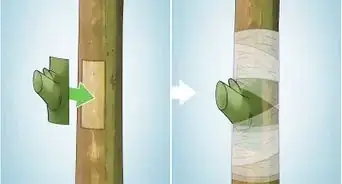
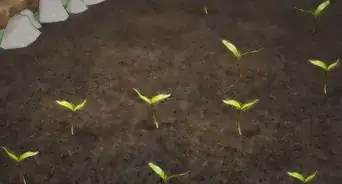






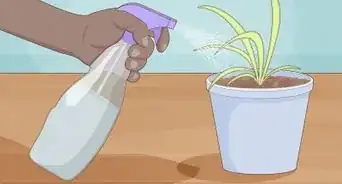

References
- ↑ https://www.swansonsnursery.com/blog/diy-moss-pole-for-indoor-plants-four-easy-steps
- ↑ https://www.swansonsnursery.com/blog/diy-moss-pole-for-indoor-plants-four-easy-steps
- ↑ https://gardenologist.org/3-reasons-to-put-on-those-gardening-gloves/
- ↑ https://www.swansonsnursery.com/blog/diy-moss-pole-for-indoor-plants-four-easy-steps
- ↑ https://www.swansonsnursery.com/blog/diy-moss-pole-for-indoor-plants-four-easy-steps
- ↑ https://www.thegreenmadhouse.com/plants/how-to-make-a-moss-pole-support
- ↑ https://wakeupandplant.com/how-to-keep-moss-pole-moist/
- ↑ https://www.happysprout.com/inspiration/train-plant-on-moss-pole/
- ↑ https://www.happysprout.com/inspiration/train-plant-on-moss-pole/
About This Article


